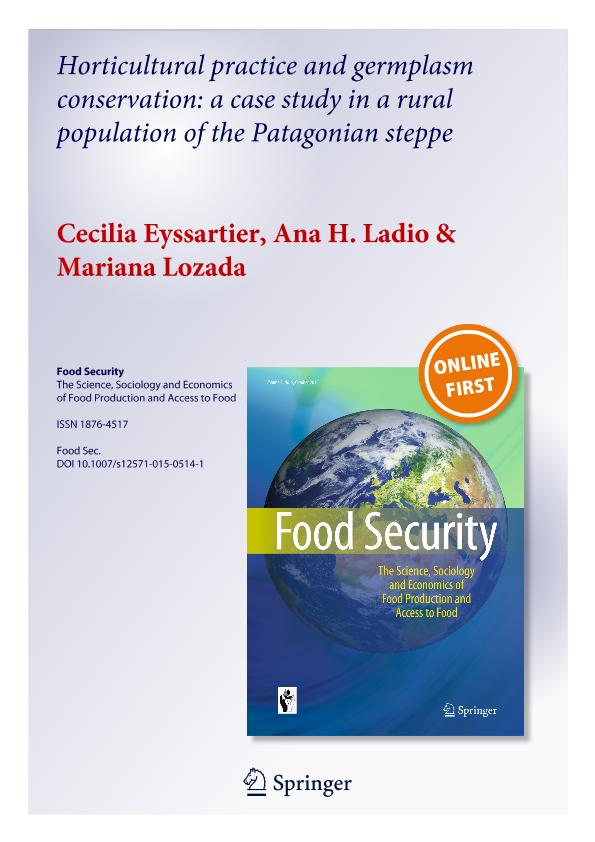Artículo
Horticultural practice and germplasm conservation: a case study in a rural population of the Patagonian steppe
Fecha de publicación:
12/2015
Editorial:
Springer
Revista:
Food Security
ISSN:
1876-4525
Idioma:
Inglés
Tipo de recurso:
Artículo publicado
Clasificación temática:
Resumen
Local food production has recently been encouraged and strengthened in order to lessen the adverse effects of global food crises. In the present study we evaluated the current situation with respect to horticultural and gathering practices in a rural, isolated population of Northwest Patagonia, located in an extremely harsh environment, and explored its implications for food security. Cultivation patterns, seed origin, plant use and species diversity were analyzed by means of semi-structured interviews. Inhabitants of this community cultivate vegetable-gardens and a high proportion of dwellers collect seeds from previous harvests, mostly of non-perennial plants. This practice contributes to the preservation of local germplasm, mainly used for food production. Plant richness analysis showed that inhabitants of this population cultivate and gather a total of 166 species. Most cultivated species are of exotic origin, whereas a high proportion of gathered species are native plants mainly used for medicinal purposes. These findings suggest that in isolated populations with low access to markets, such as Pilquiniyeu del Limay in Northwest Patagonia, cultivation and production in vegetable gardens not only contributes to their food supply but also favors plasticity and resilience. The experience of these local dwellers could provide inspiration for coping with global environmental changes and for promotion of the emergence of resilient horticultural processes, which might be beneficial for society as a whole.
Archivos asociados
Licencia
Identificadores
Colecciones
Articulos(INIBIOMA)
Articulos de INST. DE INVEST.EN BIODIVERSIDAD Y MEDIOAMBIENTE
Articulos de INST. DE INVEST.EN BIODIVERSIDAD Y MEDIOAMBIENTE
Citación
Eyssartier, Cecilia; Ladio, Ana Haydee; Lozada, Mariana; Horticultural practice and germplasm conservation: a case study in a rural population of the Patagonian steppe; Springer; Food Security; 7; 6; 12-2015; 1259-1271
Compartir
Altmétricas




